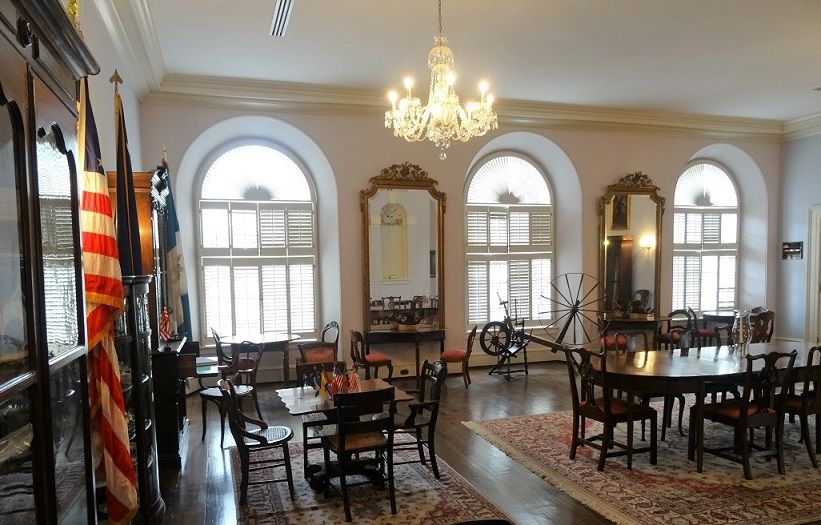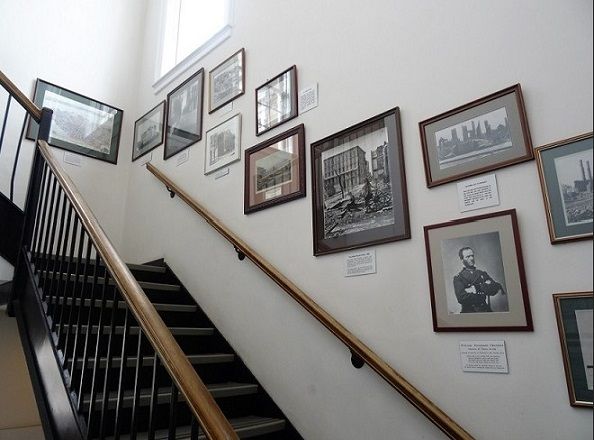


|
|
|
|||||||||||||||
|
|
||||||||||||||||
|
|
|||
|
|
Charleston Old Exchange & Provost Dungeon
Built between 1768-1771 as the office of the King’s Customs Collector, a public meeting place and a place for entertainment, the Old Exchange and Provost Dungeon with its’ striking Georgian Palladian architecture was one of the last formal structures built by the British Colonial Government in the American Colonies. Prior to the construction of the Old Exchange and Provost Dungeon, the Court of Guard building stood on the site. This held a jail which imprisoned many pirates and had a meeting room above it. This formed part of the walled city of Charles Town as it was known during the Colonial and Revolutionary periods and was the only walled city under British rule in the American colonies. The town was renamed from Charles Town to Charleston in 1783.
From the 15th through to the 19th centuries it is estimated that over 160,000 people were brought from Africa and sold as slaves in Charleston, and the Exchange was the location for such sales. During the period when Charleston was the capital of South Carolina, newly chosen state leaders were “presented” to the public from the front of the Exchange Building. The building was the centre of public life from 1783 until 1818, when it was sold to the federal government. Today the building is a museum entered by steps leading to the Exchange floor. This level originally was an open-air arcade. Today contains the entrance to the museum which is staffed by people in the dress of the 18/19th century. Immediately in front of the entrance door is a gift shop. The Rebecca Motte Room - named after the Revolutionary War Heroine on the South side is the meeting place for the Rebecca Motte Chapter of the National Society of the Daughters of the American Revolution (DAR).  The clock on display in the Rebeca Motte Room once occupied the circular window on the building façade before it was removed in 1979. On the North side of the floor is the South Carolina State Daughters of the American Revolution Room, which displays items from the Special Collection of the National Society of the Colonial Dames of America in the State of South Carolina. Charleston Post Office was housed in the Old Exchange building from 1815 to 1896. From 1861 it housed the Confederate Post Office. The Post Office can still be seen on this floor. On all walls in corridors and stairways are display boards and photographs depicting and explaining the history of the building.  On the second floor, the Great Hall has been an integral part of Charleston’s and of The Americas' history. It was in this room in 1773 that the citizens of the town decided not to buy any tea taxed for the propose of raising revenue in America, and seized the tea crop and stored it in the cellar rather than dump it in the harbour as in Boston. This was later sold to help the patriot cause. In 1774, delegates to the Continental Congress were elected here to represent South Carolina and it was from the steps of the building that the Declaration of Independence was declared to South Carolina in 1776. In 1788, over 220 delegates from around South Carolina met in the Grand Hall and ratified the United States Constitution, becoming the eighth state to do so, and in May 1791 a ball was held there to celebrate the new country, with President George Washington being present. The adjacent Isaac Hayne room presents a tribute to those who died in the Revolution and are seen as patriot martyrs. It was named after patriot Colonel Isaac Hayne who was imprisoned in the dungeon prior to his execution. The level below this floor was used to store goods until 1780, when the British converted it into a prison where many of Charles Towne’s prominent citizens were held. It was used as a dungeon until 1782 when the British left the town.
In 1965 the Half-Moon Battery portion of the 1698 fortification wall was excavated beneath the cellar of the building and is the only place where these fortifications can still be seen. Also to be seen is a model of the Court of Guard building prior the current one being constructed. The original building being constructed in 1704 and that remained until 1767 and the Exchange and Customs House was built. The first floor was used as a jail while the second provided a public meeting room. During 1690 to the 1730s a wall of between ten to thirteen feet high protected the town. The Half-Moon Battery was a semi-circular protrusion in the centre of the seawall and was the main entrance to the town from the water. Today the cellar houses exhibits found during archaeological excavations and mannequins to tell the story of its history. This was opened to the public in 1966. In 1981, after restoration, the complete building was again opened to the public. The attendants in period dress and the talks provided give the building an authenticity and provide an interesting learning experience. To see more photographs and take a virtual tour of the site click on the photoshow below.
|
|
|
|
|
|||
All Photographs were taken by and are copyright of Ron Gatepain
| Site Map |